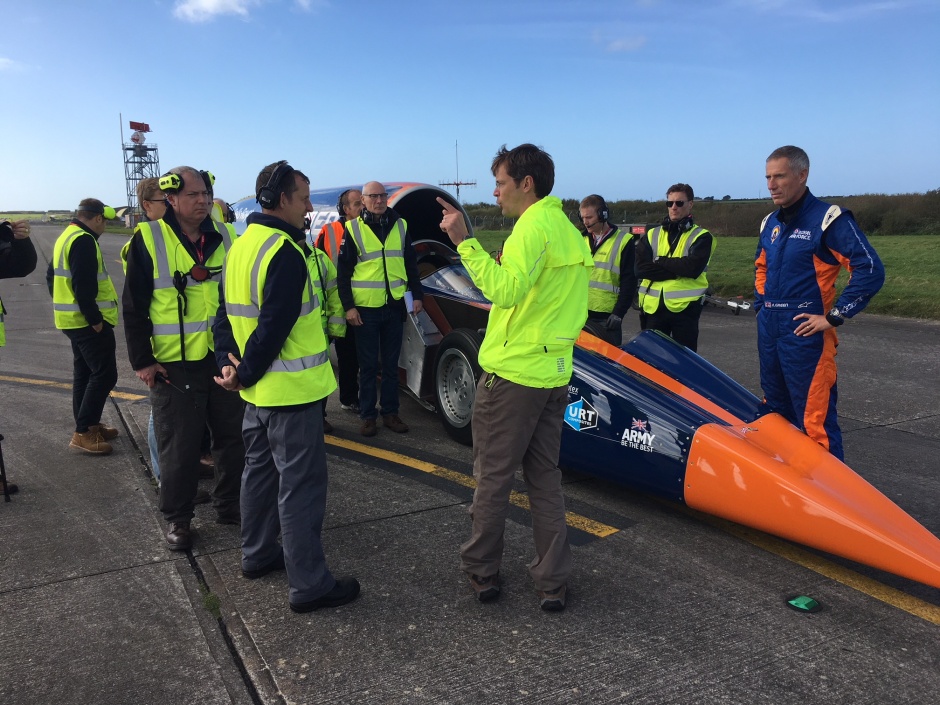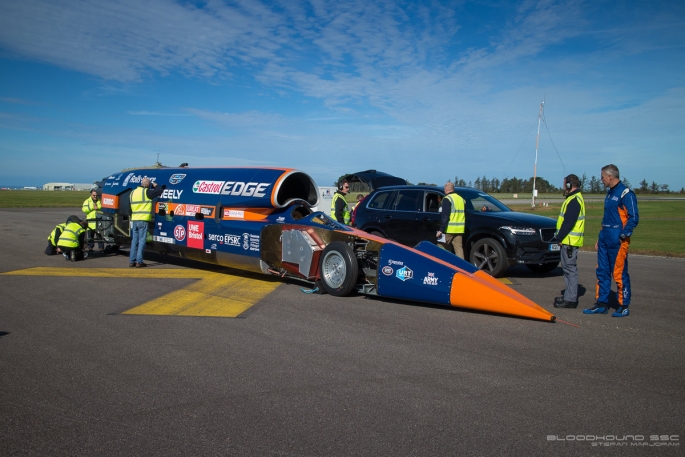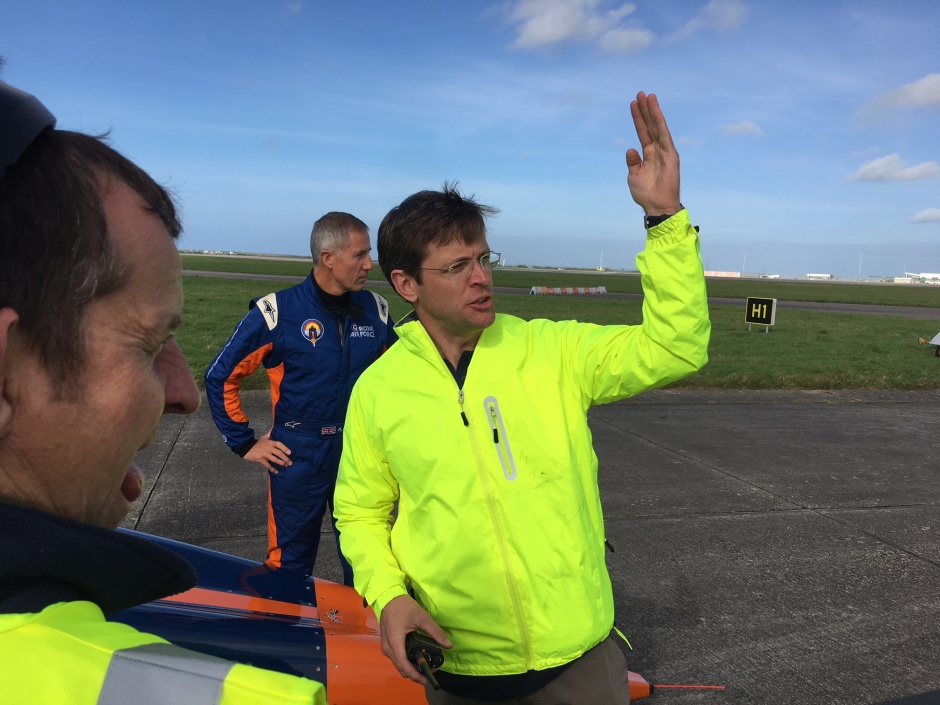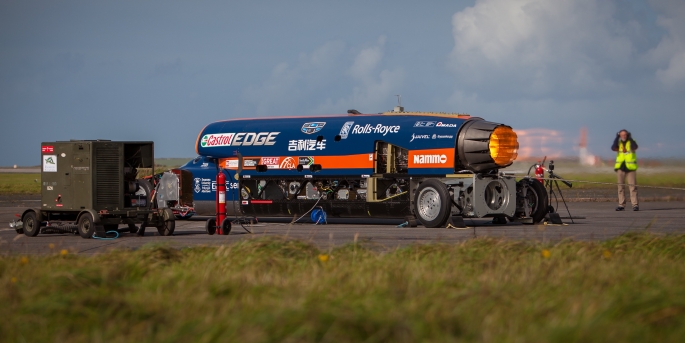The Engineer spoke to the project’s head of engineering operations, Stuart Edmondson, about how the team is testing the performance of the car ahead of what promises to be a momentous occasion for the project.
What are you currently testing on the vehicle?
We’ve spent years building and designing and doing all the bench testing we could do in Bristol.
The next step was to do the final integration testing of the whole car: that was the static testing carried out last month (September 2017). And whilst that proved very successfully the integration of the engine and all of the systems working together, it didn’t give any understanding of the actual dynamic performance of the vehicle.
What we’re doing now is exploring and comparing the performance of the car with the modelling that we’ve done on a computer. It’s very much about the performance of the engine on the vehicle, the performance of the braking, and the directional stability.
It’s an incremental approach. At low speeds, we can very simplistically understand its capabilities and extrapolate that forwards to enable us to push the speeds further.

How’s it going?
It’s doing pretty well. What’s impressive is the performance of the EJ200 [the turbofan jet engine that will provide around half the thrust of BLOODHOUND SSC and which is typically used in the Eurofighter Typhoon]. We knew it was a very capable engine. But it’s really surprised us how quickly it does accelerate and the power that’s exerted into the car is actually far more impressive than we expected on the modelling.

We’ve had niggles. For instance, we’ve had to understand the braking capabilities of the carbon brakes and that’s been interesting. Their performance is very much linked to the energy you put in them so actually at low speed they’re not as effective as we first thought but they’re very effective once you start putting a lot of energy into them. That’s a good example of how we’ve explored the ability to stop the car. It’s all well and good getting the speed up but one of the biggest challenges we have is stopping it safely.
How is data from the car acquired and analysed?
Initially, it’s a download post-test, the car is covered in all sorts of sensors so we’ve got a trove of data that’s coming off the car. For our initial testing downloading at the end of a run is perfectly fine because we spend hours going through the data. But something we’re doing now is exploring the ability to get live data off the car and hopefully we’ll have that available towards the end of the month.
What data are you particularly interested in?
It’s not just about the performance. We’re looking at all of the stress strains in the car; temperatures and so on.
Whilst we’ve got an inkling of what will happen with the various things - bearing temperatures for example - we can actually review that data post-run and potentially spot any issues before they arise.
What happens to data acquired during these tests?
We’re now relying on real data rather than model data and that’s what the dynamic phase is all about: that evolutionary step of going “OK the model was close but not accurate”, and tweaking it accordingly.

How useful is feedback from Bloodhound’s driver - Andy Green?
The dynamic testing is also about the feel of the car and how stable it is to the driver – so it’s not just about the data, it’s about Andy’s feedback, and he’s very happy. He’s driven Thrust SSC (the current land speed record holder) and the stability of this car is phenomenal. We’re potentially looking at increasing the envelope in which the car can operate because of its stability. To watch it is fantastic: it’s a car on rails!
Aside from the rocket engine (which is still under development) is there anything that you can’t currently test?
There are limitations. We’ve got to realise that this is the first time the car’s ever run and that’s a huge step for the program. And whilst we can confirm a lot of things it’s not everything. The wheels are different, we’re not using parachute braking in Newquay and the constraints of the runway are significant.
The key thing for us is very much about the technical issues that can be resolved whilst we’re still in the UK, to then allow us to be best prepared for South Africa. That’s when we can increase the envelope.
Will there be additional dynamic testing in South Africa ahead of the attempt on the land speed record?
The process we’ve got is about incremental increases in speed. We’re doing that here, and we’ll then continue that regime out in South Africa and continue validating the model step by step. It’s not “fire the rocket once and off we go.”

What the atmosphere on the team like?
It’s fantastic. The first time we did the static testing that was hugs and cheers, a really big moment. The car's been a long-time design and build, so to finally light it up was a fantastic achievement. Then the first time it rolled down the taxiway under its own steam was massive. Morale is extremely high at the moment and we’re really looking forward to the high-speed tests at the end of the month.
Bloodhound’s first public runs will be carried out Newquay airport between 26th and 30th October, which has been set aside as a special STEM education day.
To find out more visit: https://bloodhoundssc.yourticketbooking.com/events/bloodhound




Glasgow trial explores AR cues for autonomous road safety
They've ploughed into a few vulnerable road users in the past. Making that less likely will make it spectacularly easy to stop the traffic for...